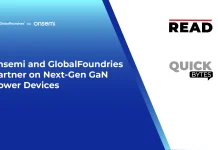Amgen announced three new data sets from its thoracic oncology portfolio that will be presented at the International Association for the Study of Lung Cancer (IASLC) 2022 World Conference on Lung Cancer (WCLC) from August 6-9 in Vienna, Austria. The data presented will include new combination study results: LUMAKRAS® (sotorasib) with pembrolizumab or atezolizumab and LUMAKRAS with RMC-4630, a small molecule protein tyrosine phosphatase 2 (SHP2) inhibitor. In addition, new data will be featured from the DeLLphi300 clinical trial, a Phase 1 dose exploration and expansion study evaluating the safety and efficacy of tarlatamab, a first-in-class half-life extended bispecific T-cell engager (HLE BiTE®) molecule targeting delta-like ligand 3 (DLL3), in small cell lung cancer (SCLC).
Also Read: Viome Life Sciences Unveils CancerDetect, the Future of Oral and Throat Cancer Detection
“Amgen is working to deliver the next frontier of treatment in lung cancer to help change patient outcomes in these historically difficult-to-treat cancers, and we’re pleased to present LUMAKRAS data for non-small cell lung cancer and tarlatamab data for small cell lung cancer, a disease where there are no therapies specifically approved to treat patients in the third-line setting,” said David M. Reese, M.D., executive vice president of Research and Development at Amgen. “As part of the LUMAKRAS comprehensive clinical trial program we are exploring multiple approaches to front-line treatment, including the initiation of a Phase 3 study combining LUMAKRAS with chemotherapy for patients with PD-L1-negative tumors and moving forward with the Phase 1 dose expansion of LUMAKRAS in combination with checkpoint inhibitors. We are also advancing novel approaches like the SHP2 inhibitor combination trials.”
LUMAKRAS in Combination with Pembrolizumab or Atezolizumab (Abstract OA03.06)
In a Phase 1b CodeBreaK 100/101 dose exploration study, a total of 58 KRASG12C inhibitor-naïve patients with KRAS G12C-mutated non-small cell lung cancer (NSCLC) were treated across 12 cohorts at varying doses of LUMAKRAS (120–960 mg daily) in combination with intravenous atezolizumab (1200 mg) or pembrolizumab (200 mg) administered concurrently every three weeks until intolerability or disease progression. Half of the cohorts were lead-in, where patients received LUMAKRAS monotherapy for either 21 or 42 days before their first combination dose. The majority of patients (67%) received prior immunotherapy and the median follow-up time was 12.8 months.
In this mostly pre-treated NSCLC population, combining LUMAKRAS with immunotherapy showed an objective response rate (ORR) of 29% (17/58 patients across all cohorts). Among the 17 confirmed responders, five patients had an observed duration of response (DoR) greater than 10 months, with eight ongoing responders. The combination of LUMAKRAS with immunotherapy also led to a higher incidence of grade 3-4 treatment-related adverse events (TRAEs) than previously observed with LUMAKRAS monotherapy, primarily liver enzyme elevations. However, lead-in cohorts demonstrated durable clinical activity with lower rates of discontinuation and grade 3-4 TRAEs compared to concurrent cohorts. Nearly all grade 3-4 TRAEs occurred outside of the 21-day dose limiting toxicity window and were resolved. Dose expansion is ongoing in treatment-naïve patients using LUMAKRAS lead-in followed by combination of LUMAKRAS with pembrolizumab.




